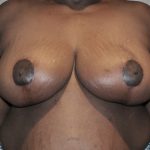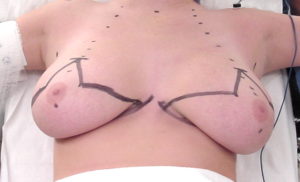
But despite the frequency of which breast reduction is done in the United States, I find several consistent misconceptions about it. These concerns almost always come up during a consultation. Here are the top three questions that I hear in my Indianapolis plastic surgery practice.
Will my breasts be lifted as they are reduced or will they still hang done…but be smaller?

You can do a breast lift without a breast reduction but you can’t really do a breast reduction without a breast lift.
Will my nipples be taken off during surgery…and then put back on?
This is a common concern because of its impact on feeling and the concern of breast feeding in younger patients who may still want to have children. That question is rooted in a reality…there are some breast reductions that are done by such a technique known as free nipple grafting in which the nipples (nipples and areolas technically) are first removed and then put back as the last step of the operation. But, as a general rule, the use of free nipple grafting in breast reductions is done in a minority of cases. That should certainly be an issue that you and your plastic surgeon are clear on before you ever get to the day of surgery.
The reasons for the use of a free nipple graft technique is when the breasts are quite large and the patient wants to go fairly small. Such a drastic change in size may put the nipple at risk of ‘dying’ after surgery. This risk is increased if the patient is a smoker or has smoked recently. This technique is also used in transgender surgery (female to male) where the goal is a completely flat chest.
Will I be in terrible pain after surgery?
I hear from many patients that breast reduction causes a lot of pain afterwards. While this is a common concern, it has not been my experience. This is an operation that works on skin and breast tissue only. While it is a lot of ‘cutting and sewing’ so to speak that takes hours to do, these tissues are not nearly as sensitive as muscle and bone work. (which lies underneath of where a breast reduction is done) While most patients report some burning of the breasts immediately afterward, this settles into an achy discomfort thereafter with nipples that are sensitive to the touch or brushing of clothes up against them. This is managed by some pain medication during the first week. While a breast reduction is certainly not pain-free, it is by no means a horrificably uncomfortable experience afterwards.
Dr. Barry Eppley
Indianapolis, Indiana




